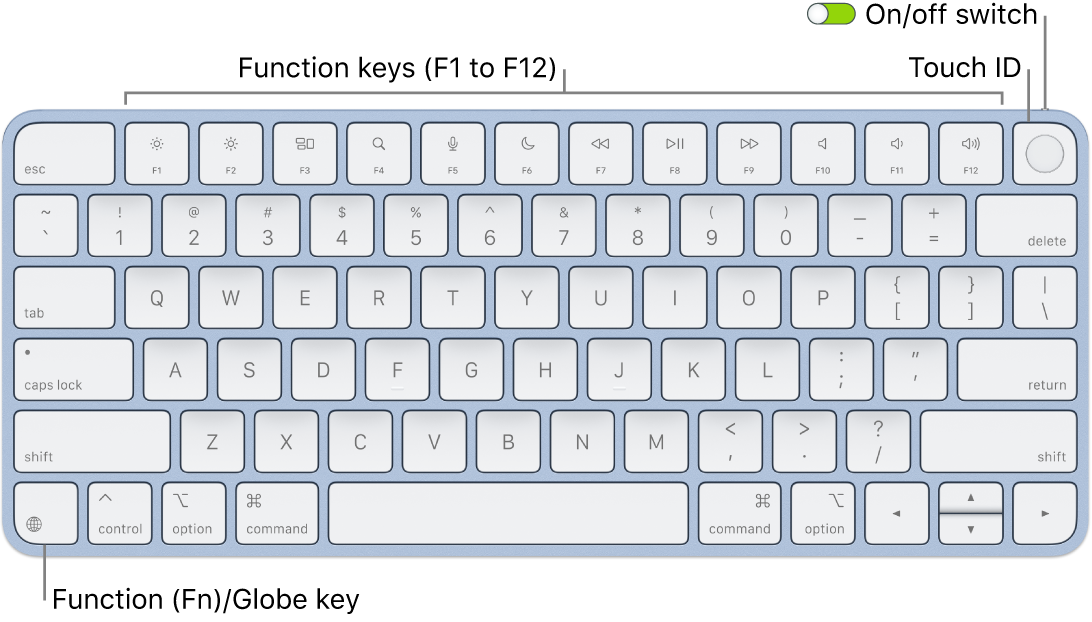Magic Keyboard
The wireless Magic Keyboard included with your iMac has built-in features that make it easy to enter emoji, switch keyboard languages, lock your iMac, and perform many system functions with the touch of a key. The Magic Keyboard with Touch ID also lets you use a fingerprint to sign in and make purchases using Apple Pay.
You can use Magic Keyboard anywhere within range of your computer. When you need to charge the keyboard, or if you need to pair it again, connect it to your iMac using a USB-C Charge Cable.
To connect your Magic Keyboard to your iMac, see Connect accessories to your iMac.

Turn the keyboard on or off. Slide the on/off switch on the back edge of the keyboard to turn it on 
Lock your iMac. Quickly press Touch ID or the Lock key 
Set up Touch ID. If your keyboard has Touch ID, you can use your fingerprint to unlock your iMac and make purchases from the App Store, Apple TV app, and Apple Books, and on websites using Apple Pay. If you don’t set up Touch ID when you set up your iMac, you can do it later in the Touch ID & Password settings in System Settings. For more information about Touch ID, see Set up your iMac. For information about Apple Pay, see Use Wallet and Apple Pay.
Use Touch ID. Place your finger lightly on Touch ID. When you first start up or restart your iMac, you need to type your password to log in to your iMac. After that, whenever you’re asked for your password to unlock the screen or make purchases, you can use Touch ID. You can also use your fingerprint to switch from another user’s account to your own if you set up fast user switching for your iMac. For more information, see Use Touch ID on Mac.
Set keyboard settings. To specify options for your keyboard and the Function (Fn)/Globe key 
Use emoji or switch keyboard languages. Press 

Use function keys. The function keys on the top row provide shortcuts for these common system functions:
Brightness (F1, F2): Press


Mission Control (F3): Press

Spotlight Search (F4): Press

Dictation/Siri (F5): Press


Do Not Disturb (F6): Press

Media (F7, F8, F9): Press



Mute (F10): Press

Volume (F11, F12): Press


Use alternate functions. Function keys may perform actions for specific apps or may have alternative functions—for example, the F11 key can also hide all open windows and show the desktop. To trigger the alternative function associated with the key, press and hold the Fn key while you press a function key.
Use keyboard shortcuts. You can press two or more keys at the same time to quickly do things on your iMac that you’d normally do with a trackpad, mouse, or other device. For example, press Command-C to copy selected text, then click where you want to paste the text and press Command-V. For a list of commonly used keyboard shortcuts, see Keyboard shortcuts on your Mac. If you’re new to the Mac, you might also be interested in Are you new to Mac?
Note: Touch ID and the function keys work as described above for any Mac with Apple silicon and macOS 11.3 or later.